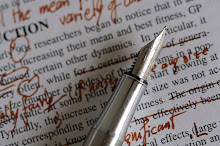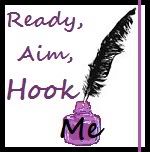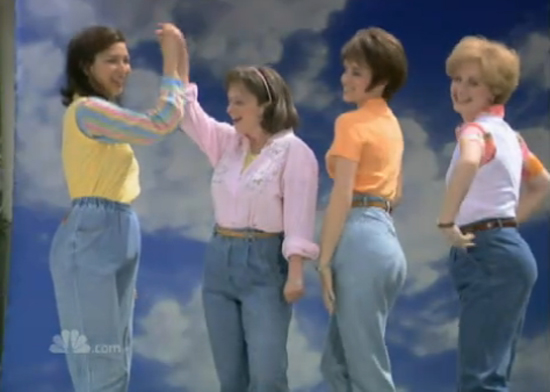(Bear with me, this will have a point. I promise. Oh, and something wacky happened with my numbering below in the conversion process. Sorry about that).
Years ago, I decided that each of my family members needed a 72 hour emergency kit. You know, in case of an emergency.
I would make sure each kit contained enough water, food, clothing, and basic survival essentials to live on in case of earthquake, hurricane, tornado, zombie apocalypse. What a good mom I was. I tossed in granola bars, pop tarts, bottled water, toothbrushes, toilet paper, hard candy, etc . . .
Bring on the emergency. We were ready.
(Just kidding. Don’t bring on an emergency. I like things non-emergency like. I really, really do).
Well, guess what. No emergency. Year after year passed in peace and harmony, and the kits were stowed safely under my bed. Eventually, with time, I forgot about them.
Here’s the thing about 72 hour kits—they need to be updated on a yearly basis. Yep. YEARLY basis. Not decade. Remember that, in case you decide to make 72 hour kits for your family members, which you should by the way. It’s a good thing . . . as long as you continually update them.
Had an emergency actually occurred, and we had to rely on those kits for survival, we would have died within hours. No joke.
Every bit of food packed in those kits was WELL beyond its expiration date. The bottled water looked nasty, and the clothing I packed (I laugh when I look at them) no longer applied. For instance, my eight –year-old-daughter would have had to wear diapers, plastic pull ups, and a size 12 month romper. My teenage son and his ten-year-old brother didn’t fare much better (Bob the Builder Underwear for each of them and footie-pjs).
But the worst of all . . . I would have had to wear “mom jeans.” Yep, the pants with the stretchy waist band (they were my after pregnancy pants). I shudder at the injustice I would have had to endure for my lack of preparedness. I would’ve looked hideous. Because even in an emergency, you still want to look cool.
My point is this: sometimes we need to make sure we are up to date on current writing trends and tips. We need to continually be updating our writing skills so we know what is industry standard and what just makes us look like amateurs and fools. There is an abundance of information available to us as writers and we need to take advantage of it. There is no reason that we shouldn’t—unless you THINK you know it all.
You would hate to be standing there, holding your manuscript, wearing “mom jeans” and looking rather dumb now, would you?
A A couple of things to remember (things I’ve seen in our few months of critiquing):
1) 1) Do not underline anything in your manuscript. Some of you have been told that you underline words or phrases that you want to emphasis. This is no longer true. You use italics for emphasis.
2) The only time you use single quotation marks is if you are quoting something inside a set of double quotations. Otherwise, always use double quotation marks.
3) 3)You only need one space after a period. Not two.
4) 4) Periods and commas always go inside quotation marks.
5) 5) No funky fonts. Stick to Times New Roman. There are a couple of others that are acceptable, but Times New Roman is the standard font. No curly Q’s.
6) 6) It’s best to use contractions in your dialogue. Most people don’t talk like this, “I can not believe he did not see the cow in the middle of the road? He should have swerved.”
7) 7) Know the industry standard for word length in your genre. If you self-publish, I guess it doesn’t matter if you have a 250,000 sci-fi novel. Traditional publishers, on the other hand, will pass it by. Especially if you are a new author. Anything less than 50K is considered a novella and not novel.
8) 8) Do not use more than one exclamation point to indicate your characters excitement. None of this--!!!!! Or this--!?! . In fact, use exclamation points sparingly.
9) 9) Do not use more than one modifier. I mean, it’s great to know that your hero has super, cute, brown, wavy, shiny hair. There is no need. Just pick one. Otherwise, your reader will forget what it was you were trying to modify.
Keep yourself updated. Read the books that are out there. Subscribe to writing magazines. Keep reading our blog (ahh, I had to put that in there).
Don’t have a decade old 72 hour kit as your writing arsenal. Make your kit fresh and current—useable. You will be so much better, so much wiser, so much more in tune to today’s writing standards if you do.
What other outdated rules have you seen people continue to use? What do you do to keep yourself current in an ever changing world of writing? Your tips and comments would be appreciated.









9 comments:
Great list! I breathed a sigh of relief that I don't do any of these. LOL Although I have to slash !! and ?? from my rough drafts constantly. Haha, two spaces after a period is a personal pet peeve. Partly because at a temp agency one time I got a lower score when I typed with ONE space on a typing test after each period and the lady there snippily told me it's been the rule to use two, like FOREVER. Mmmft!
Good advice but I'm going to disagree with you on these "industry standards" in particular the space after the period. My publisher specifically requires that my manuscript have two spaces after each period. The solution is to know how to power use your word processor and add those spaces in without having to hunt down each and every one.
When you finally work with a publisher or editor, each one is going to have specific things that they want in order to format the manuscript. I'm learning this and it's kind of exciting too.
Anyway...that's just my two cents. Each publisher is going to want something different from the next.
The dreaded mom jeans...make me laugh.
Number four makes me want to cry. I swear on the OED that my elementary teachers taught this method to me - and it imprinted, but I have been taken to task by editors/publishers/agents for doing exactly that (and also for not doing so).
I like your list.
I love the list you put together!! (sorry, couldn't resist.) the only thing I have to remember is not use excessive adverbs and try to avoid starting stories with time (something I was told once a couple years back.)
Thanks for the list! I have been underlining for emphasis for years. That'll be a hard habit to break.
The truth is Angela still wears mom jeans. Admit it.
I didn't think it was such a big deal with different fonts until I started reading submissions for this blog. It is really hard to read some of our entries because the type is too small or not double spaced. It's more of a courtesy than anything on those who have to go through it.
That is good to know, Mike.
Everything I've been told by other writers, instructors, editors,and a publisher was to use a single space after a period. The reason it used to be two spaces years ago was that we used to write on typewriters and every space that they used was monospaced type--every character occupied the same amount of horizontal space. So every word had a lot of white space between each letter and word. It was hard to spot the one space between sentences. So on a typewriter, two spaces made it easier to read.
If your publisher is requesting two, then of course do it. But every major style guide—including the Modern Language Association Style Manual and the Chicago Manual of Style—prescribes a single space after a period. (The Publications Manual of the American Psychological Association, used widely in the social sciences, allows for two spaces in draft manuscripts but recommends one space in published work.)
So, for all practical purposes, I would use one space unless told differently.
Oh, and D.S. Funny har,har. I do NOT wear mom jeans. Though I have to admit, when I used to wear them, they were rather comfy.
Baby number four just turned a year and I'm trying to figure out what's wrong with Mom jeans. The women in that photo are wearing them with style!
Loved this post. Thanks. (I almost used another exclamation point. Yikes.)
Reading blogs like this one helps me to keep up on the latest rules. I'm up on all the points you've posted here. The last one I have a slight problem with. I tend to put two modifiers. Thanks for the list. It is encouraging.
Post a Comment